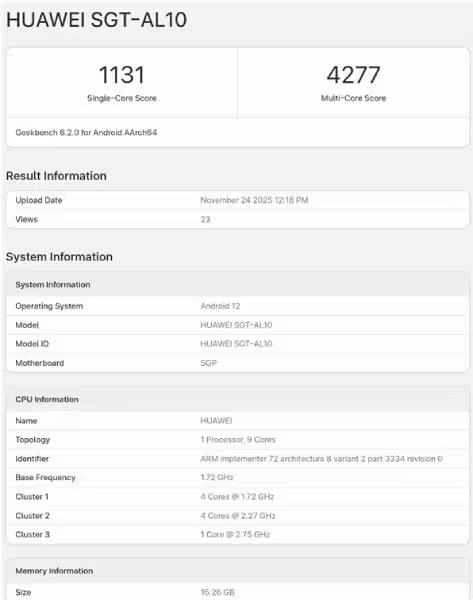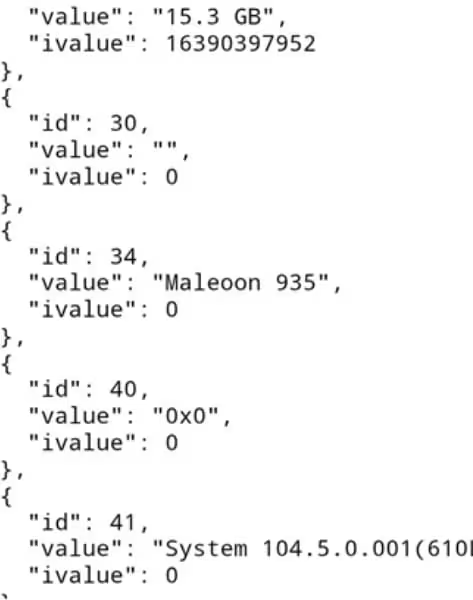3 Minutes
Huawei's Mate 80 launch is hours away, but a pre-launch Geekbench entry for a Mate 80 Pro Max has already revealed key details about the new Kirin 9030 chipset. The listing gives us a first look at the CPU layout, GPU name and early performance figures — with a few important caveats.
What the Geekbench entry actually shows
The leaked listing identifies the Kirin 9030 as using a 1+4+4 CPU configuration for a total of nine cores: one high-performance core clocked at 2.75GHz, four mid cores at 2.27GHz and four efficiency cores at 1.72GHz. The GPU is listed as Maleoon 935, and the test unit is shown with 16GB of RAM.
Notably, tipster Digital Chat Station flagged the run on Weibo as sub‑maximal — the chip wasn't operating at full frequency during this test. That means the benchmark numbers are preliminary and likely understate the chipset's peak capabilities.
Early performance — modest but telling
Despite the throttled run, the Kirin 9030 posted 1131 points in Geekbench single‑core tests and 4277 in multi‑core. Those results place it closer to Snapdragon 7‑series performance than to current flagship silicon from Qualcomm or MediaTek.
Put another way: these scores give us a rough ballpark but shouldn't be treated as the final word. With the chip not running at full clocks, Huawei may still extract considerably higher numbers in retail devices or subsequent tests.
 |  |
Why the extra core matters
The architectural shift is arguably the most interesting detail. Huawei moved from an eight‑core Kirin 9020 layout to this nine‑core Kirin 9030 design. The previous Kirin 9020 used a 1x2.5GHz prime core, 3x2.15GHz mid cores and 4x1.6GHz efficiency cores, paired with a Maleoon 920 GPU.
Adding a ninth core and boosting some clock speeds should translate to better multitasking and sustained performance, even if peak single‑thread numbers remain competitive rather than class‑leading. In short: structural change could matter more than the initial benchmark figures suggest.
So, what should you expect from today’s reveal?
Expect Huawei to detail official clocks, power targets, and software optimizations that affect real‑world speed and battery life. The Mate 80 Pro Max Geekbench leak gives a useful preview — but the final story will include thermals, imaging chips, and optimizations that benchmarks don’t capture.
Curious to see how Maleoon 935 compares under full load? So are we. Stay tuned as Huawei takes the stage later today.
Source: gizmochina


Leave a Comment